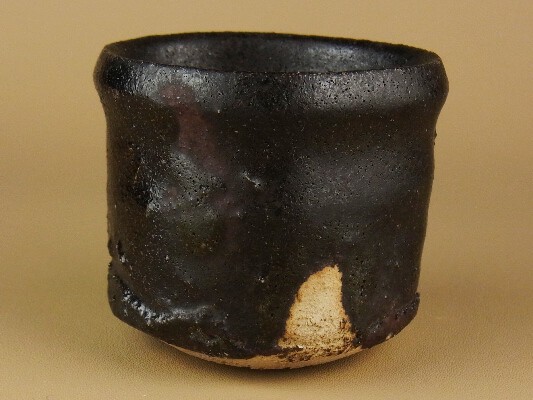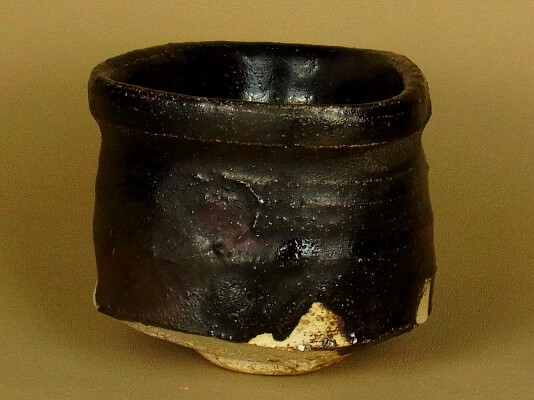-
Posts
6,786 -
Joined
-
Days Won
10
Content Type
Profiles
Forums
Events
Store
Downloads
Gallery
Everything posted by cabowen
-

So They Are Still Out There...
cabowen replied to Lindus's topic in General Nihonto Related Discussion
Looks textbook Shinshinto Yokoyama Sukenaga... -
You are most welcome....Regardless, it appears to be a really nice sword- congrats!
-
No idea who or what the Kyushu Appraiser Association is, but the bottom says clearly states in Japanese what I mentioned above. There seems to be some connection between the sword, the paperwork, and the NBTHK/Ueno National Museum...
-
長州萩住井上清高作 Choshu Hagi ju Inoue Kiyotaka saku
-

So They Are Still Out There...
cabowen replied to Lindus's topic in General Nihonto Related Discussion
£4800 -

So They Are Still Out There...
cabowen replied to Lindus's topic in General Nihonto Related Discussion
More like 8x.... -
Looks like poetry or some sort of literature...
-
It says at the bottom: Ueno National Museum/NBTHK so I would tend to think this sword was appraised and this paper written by someone there affiliated with the NBTHK.
-
There is a well regarded line of Kanenobu smiths from the Kaneuji group in Mino in O'an (1368-75) (兼信). I would defer to the NBTHK appraiser who, if the paperwork is to be believed, apparently actually handled the sword... Do you have a kantei-sho or only this handwritten paper? The paper was written by a Japanese- possibly a representative of the NBTHK.
-
It is a traditionally made blade by a good smith. When showa-to are going for $1600+, this to me is more than reasonable. Why, I wonder, do most of the swords this seller lists have the same "look" to the polish????
-

Kama, Jingama, Kusari-gama, Kama-yari etc.
cabowen replied to Bugyotsuji's topic in General Nihonto Related Discussion
That had to have been a real $%##7% for the togi-shi....Very interesting- thanks for sharing.... -
No doubt most have some sort of financial constraints and (hopefully) buy/sell within those constraints. But let's be honest: collecting anything but the absolute lowest quality Japanese swords requires at a minimum a disposable income of some sort. It's just not a hobby you can actively participate in forming a collection at anything but the very lowest level unless you have the capability to drop several thousand dollars at a pop. This is not elitism, it is reality. Once one has seen quality, it becomes hard to be satisfied with less. I knew several sword enthusiasts in Japan (notice, I didn't call them collectors) who attended every kantei meeting, exhibition, etc. yet owned not 1 sword. Shibui! When I asked them about this, they said they simply couldn't afford the type of sword they would want to own and rather than live hand to mouth to own a nice sword, or own something of poor quality, they simply studied great swords every weekend at a kantei meeting and let the owners worry about the care and feeding of these treasures. Makes a lot of sense. I often wonder why we don't see this attitude more in the US... Instead, we see people spend years collecting all sorts of very poor quality items rather than studying and focusing their limited resources on a few quality items. Back when swords were $20 a piece, you could collect treasures for next to nothing and those at any financial level could assemble a wonderful collection. Unfortunately, those days have passed and collecting quality swords, like it or not,, has become what it has always been in Japan- a rich man's hobby. Just like most types of art collecting. Some continue to live in the past and instead of developing an eye for quality, knowledge, patience, and awareness of a good deal, insist on treasure hunting and bottom feeding. When they ask for opinions and are told their items are poor, they get huffy and cry elitism... Speaking personally, I became interesting in collecting gendai-to when in college and I couldn't afford older swords of quality. I recognized that there were those of very good workmanship and that the market wasn't valuing them (in my opinion)) properly. Now, the better ones are no longer $400-$500 but $10,000 and more. I rarely buy anything anymore for my collection-partly because really good gendai are scarce but also because they are expensive. But I haven't lowered my standards and started buying poor quality, cheap items simply because I can. I would rather not buy anything than buy poor quality items. For those on very limited budgets, I would suggest finding something undervalued, saving for that great deal that shows up (like this one), and make careful buying decisions with a long time horizon, rather than buying low end items willy nilly and hoping for a miracle. One should also keep in mind that there are always other hobbies that are less expensive but can be equally interesting and fulfilling. I have found these very alluring, and much less expensive than a good sword! As a bonus, they are a good excuse to drink sake:
-
Glad to see someone stepped up. Deals like this don't come along that often.
-

Tamahagane Analysis + Question
cabowen replied to JH Lee's topic in General Nihonto Related Discussion
I have seen many chemical analyses of tamahagane and there is NEVER more than tiny amounts of elements other than iron and a carbon... -

Tamahagane Analysis + Question
cabowen replied to JH Lee's topic in General Nihonto Related Discussion
That is very odd and quite unusual. There should be no material amount of copper in the sample. I would ask the NBTHK... -
That's a steal already...TIme payments on a $1600 sword? Really?
-

Tamahagane Analysis + Question
cabowen replied to JH Lee's topic in General Nihonto Related Discussion
Did you buy the tamahagane from the shop or pick up pieces from the kera outside? -
Often a new shirasaya/koshiare will not allow the complete insertion of the sword because the wood is slightly swollen due to the (higher) humidity in Japan. Once it dries a bit and acclimates to the local (lower) humidity, it may well fit fine. This can be observed in areas of high summer humidity, low winter humidity as well- sometimes in summer a sword will not fit all the way but will in winter. So MAYBE the sword will fit once the wood acclimates. As has been noted, building a koshirae without the blade in hand is a BAD idea.
-
Does the seppa occlude part of the hitsu-ana?
-
The blade would appear to have a name on one side of the nakago (tang). No clue on the other side. There were swords being made in China (Manchuria) during WWII so it is possible that this was made there during the war....The blade is very crudely made and does look very much like the usual Chinese attempts.
- 13 replies
-
- wakizashi
- translation
-
(and 1 more)
Tagged with:
-
http://ajw.asahi.com/article/behind_news/social_affairs/AJ201112310017 Remember that is an average- meaning there many shorter as well as taller.
-
Now up to 4 times.... Ken, swords were quenched once. Nijuba can form from a single quench, depending on the steel, forging, construction, clay, etc. You would loose the first hamon if you reheated and quenched a second time....
-
Jason- Please have a look at these: https://books.google.com/books?id=BWy3gx-0PR8C&pg=PA46&lpg=PA46&dq=inazuma+hamon&source=bl&ots=AcDSUsQGkG&sig=XKLb_MuAAKUQc5LDLod6Gr0tc1M&hl=en&sa=X&ei=yx0PVa56yo3IBMrBgqgI&ved=0CDUQ6AEwBg#v=onepage&q=inazuma%20hamon&f=false http://www.japaneseswordindex.com/terms/terms.htm If you still have questions, let me know...
-
Whoops! Maybe 3 times is a charm? Sorry about that....





